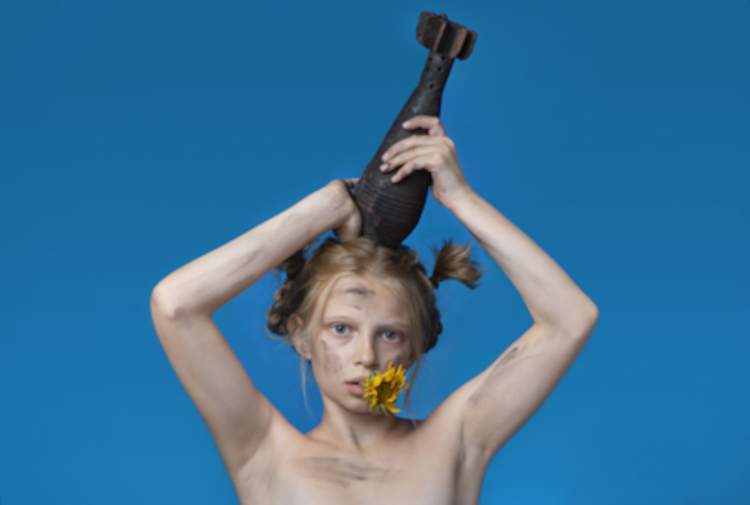In Milan, more than one hundred unpublished shots tell the story of war and famine, the two contemporary tragedies
TheCivic Aquarium of Milan is hosting until Dec. 11, 2022 the exhibition The Last Drop, curated by Nicolas Ballario, presented by Fondazione CESVI and photographer Fabrizio Spucches and promoted by the Milan Culture Municipality and the Aquarium - Civic Hydrobiological Station. The exhibition aims to be an emotional and unabashed tale to bring out two of the greatest social issues of our time: war and famine.
More than one hundred unpublished shots to tell the experience of CESVI Foundation and Spucches in Ukraine and the Horn of Africa, where the artist visited CESVI’s projects and met the people helped, to photograph those directly affected by the war and those who, although far away and in another continent, are experiencing similar fragile conditions due to the climate emergency, famine and, indirectly, also the conflict.
Indeed, while it may be easier to understand the tragedy affecting the Ukrainian people today, it is more complex to understand its effects in lands such as Somalia, Kenya or Ethiopia, which, grappling with the most severe drought since 1981 and an agriculture on its knees, have been forced in recent years to depend on other countries for the import of raw materials. In fact, it was precisely from Ukraine and Russia that huge quantities of grain were arriving to those countries, in some cases going so far as to meet as much as 90 percent of their needs.
What Spucches wants to recount is a vessel filled with contemporary tragedies that are so absurd and seemingly distant, yet closely interconnected, with a devastating outcome and that find their only victim in the “last,” a category that goes far beyond geographic categorization. It does not intend to make comparisons or comparisons, but wants to lead the visitor into a metaphorical and paradigmatic perspective, into a short-circuit that subverts the media narrative, which is always linked to the high-sounding emergency.
From the outset,water is the protagonist of this exhibition, which aims to tell the story of the gap between Eastern European countries and some African countries: the former are strategic on a geopolitical level precisely because they are endowed with enormous sources of water that allow for flourishing agriculture (starting with wheat), a key economic asset as far as exports are concerned. While in the Horn of Africa, due to the most severe drought in forty years and the blockade of grain exports from Ukraine and Russia, more than 20 million people are at risk of losing their lives (UN OCHA data, September 2022).
In The Last Drop dozens of people are rendered indistinct in the photograph, victims of war or drought. People who are all sailing in the same boat, indistinctly in the blue sky that is the sky, dropping bombs in Europe and empty of rain in Africa.
Then there is a body of water from which emerge portraits that look like tombstones and a drop that generates concentric and hypnotic waves, as hypnotic is the succession of images. And if a faucet hanging too high to be closed nails the viewer to his helplessness, the giant photographs of children point to the hope of a future possible and all to be built. Mothers and children answer the same question, and entire families are shown with everything they own, either because fate never gave them anything or because the bombings destroyed what they had (such as the suitcases that a father of a family provided for the exhibition, the only remaining memory of his wife and children, killed while trying to escape).
The exhibition path is thus intended to route the visitor into a limbo that shuffles the cards and gambles to the point of suggesting the unimaginable: on the left people who, locked in a black body bag, have lost children, brothers, sisters, parents, wives, husbands, and who hold a sunflower, the symbol in their country. On the right, instead, the extreme tile of this gruesome domino that is already producing long-term effects: men who, for lack of food, take refuge in the most miserable drugs, drug addicts who, in order not to feel hunger, try to abandon reality.
Through the gaze of Fabrizio Spucches, the exhibition shows the contemporary from a completely new point of view; a present that is incomprehensible and catastrophic at the same time, telling us that the last drop of African despair is also a war being fought on the other side of the world. A last drop that is a bitter allegory because it is spilled on a land that that drop yearns for it.
The exhibition is curated by Nicolas Ballario and features Factanza as its media partner. Exhibition set-up and printing are by Al laboratorio.
For info: www.cesvi.org/blog/appuntamenti/the-last-drop
Image: Fabrizio Spucches, The last drop - little girl (2022; digital photography) © Fabrizio Spucches
 |
| In Milan, more than one hundred unpublished shots tell the story of war and famine, the two contemporary tragedies |
Warning: the translation into English of the original Italian article was created using automatic tools. We undertake to review all articles, but we do not guarantee the total absence of inaccuracies in the translation due to the program. You can find the original by clicking on the ITA button. If you find any mistake,please contact us.



























